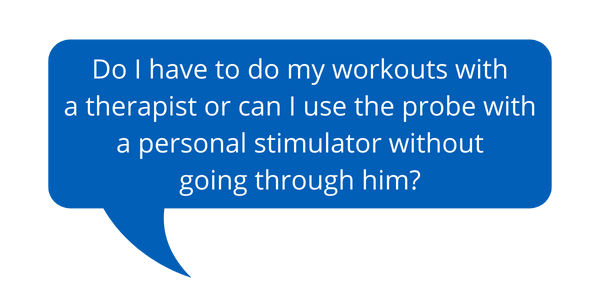Frequently asked questions
In France, certain conditions must be met in order to be covered by the Assurance Maladie health insurance scheme:
- Be affiliated to a health insurance scheme,
- have paid their social security contributions regularly,
- Stable residence in France is generally a prerequisite for coverage,
- A medical prescription,
- The basic reimbursement by the Assurance Maladie is generally set at 60% of the basic tariff established by the LPPR.
For detailed information on reimbursement, click here: Health insurance reimbursement
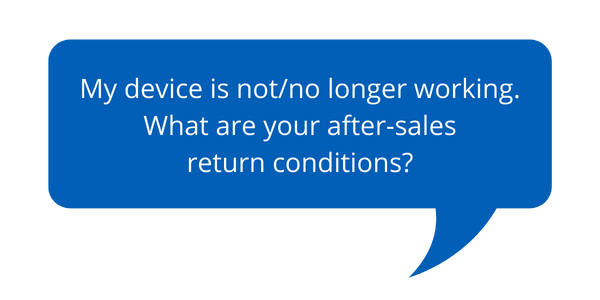
Before starting an after-sales procedure, we recommend a few preliminary checks:
Make sure the cable is not defective,
Test the probe in your hand to check the current.
If, despite your checks, the product still doesn't work, follow this link to find out what's wrong : after-sales procedures.
It is not advisable to use intra-cavity electrical stimulation alone at home without having already undergone a series of re-education sessions and without the expert advice of an experienced therapist.
In any case, sessions should always take place under the guidance of a therapist trained in this method.
Once you have completed your treatment (around 10 to 20 sessions), your doctor will decide whether you can benefit from further home treatment by purchasing a personal stimulator.
In this case, however, the regulations are very clear and the procedure clearly defined. Equipment may be reimbursed under certain conditions.
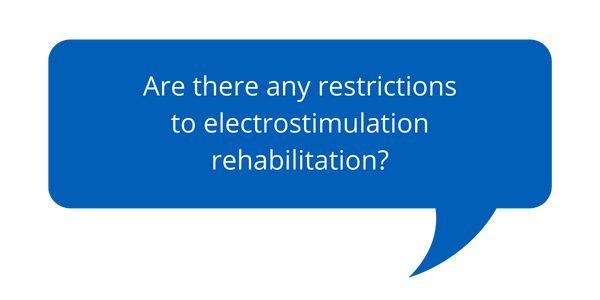
Carefully read the data sheet enclosed with the probe. It indicates any contraindications.
Vaginal or urinary tract infection -
Colorectal, proctological or genitourinary cancer -
Pregnancy -
Implanted pacemaker (consult your cardiologist) -
Uretero-vesical reflux and hypotonic bladder -
Do not use in water -
Do not immerse cables -
Do not connect to high-frequency surgical equipment (electrode burns) -
The long-term effects of stimulation have not been determined -
Follow prescriber's instructions -
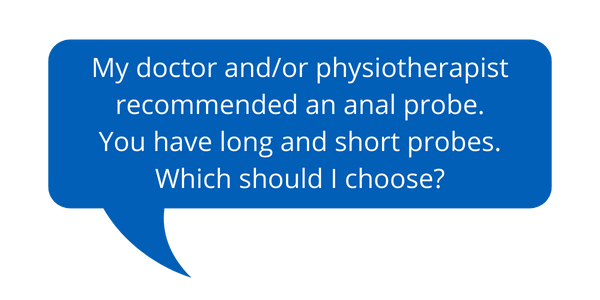
La sonde longue (ANALYS ou ANALYS +) est plutôt indiquée pour tout type de rééducation ano-rectale.
With this probe, your therapist can stimulate the muscles of the anal canal and/or the levator ani muscles. In addition, counter-resistance can be applied during contraction.
Finally, there's no risk of the probe being sucked into the anal canal. The probe is locked in place by the gluteal fold.
The short probe offers fewer advantages. It can only be used to stimulate the anal sphincter, and runs the risk of moving into the canal.

You can buy a personal portable stimulator after your rehabilitation sessions.
Make sure, however, that the device is suitable for the treatment of your pathology.
First connect your probe, then place the wet probe, possibly impregnated with 3 drops of lubricating gel, in the vagina or anus, and then, and only then, switch on your stimulator.
Choose the program recommended by your therapist and slowly build up the current until you feel a muscular contraction, which may take the form of a backward thrust, a muscular cramp or a flutter. You should never feel any pain (the probe may be in the wrong place) or electric tingling when you feel your muscles contract.
If you feel slightly uncomfortable, you can make a small contraction while the current is passing through.
If in doubt, call your therapist or our customer contact service.
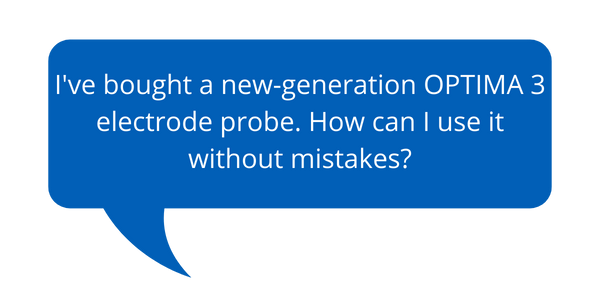
This probe has the electrodes on one side only, which avoids the inconvenience of stimulation towards the bladder or cervix. The probe is always inserted with the electrodes (hemispherical balls) facing downwards, so that the 1st and 2nd balls are fully inserted into the vagina.
As a rule, the 3rd ball is also inserted into the vaginal cavity. The probe stays in place with the stop at the vaginal entrance. You can act more on one side than the other (right or left) by giving the probe a slight quarter-turn to the right or left. The electrodes are then positioned on the lateral side.
Normally, this technique is used to strengthen one side if it is weaker than the other.
Votre thérapeute vous donnera la valeur de votre musculature avec un examen appelé testing musculaire.
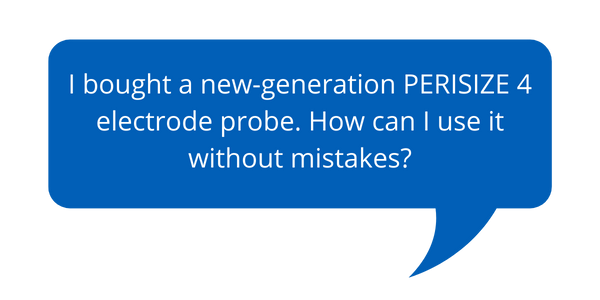
Cette sonde est la plus performante des sondes du marché.
1. Ôtez le petit cavalier qui bloque la sonde,
2. Branchez les câbles de façon que les 2 électrodes de gauche et les 2 de droite soient bien connectées sur des sorties différentes de votre stimulateur,
3. Vous la mouillez et mettez éventuellement 2/3 gouttes de gel lubrifiant sur le sommet de la sonde et les électrodes,
4. Vous pincez alors délicatement la sonde jusqu’à ce que les 2 branches se trouvent à leur butée,
5. Vous introduisez la sonde avec les électrodes vers le bas et l’arrière. Vous lâchez la sonde quand elle est dans le vagin. Vous pouvez à ce moment la stabiliser pour plus de confort mais les 2 branches porteuses de fil doivent se trouver à l’extérieur de la cavité.
6. Pour ressortir la sonde quand la séance est finie, ne pincez pas la sonde. Prenez une branche délicatement et tirez la sonde vers l’extérieur. L’autre branche se dégagera toute seule.
ATTENTION : lorsque vous nettoyez la sonde ne jamais écarter les branches sous peine de casser la sonde à son sommet. Rincez la sonde sous un jet d’eau courante. Cela suffit.
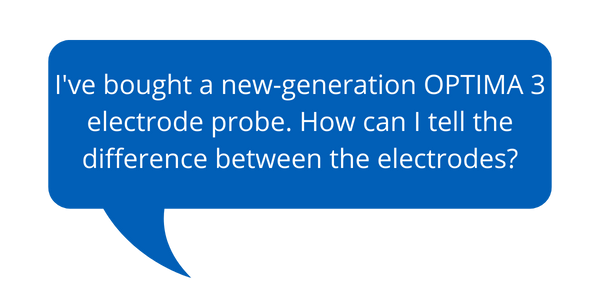
You only need to connect 2 of the 3 electrodes for electrical stimulation. These are usually the 1st and 2nd balls from the end of the probe.
The unused electrode is for muscle biofeedback work with your therapist. In this case, your therapist will use this electrode as a reference for recording.
To locate them easily, on each connection plug at the end of the cables you have 3 dots: 2 hollow and one round. The round part indicates which electrode is being used.
In incontinence or perineal musculature rehabilitation, the electrodes always point downwards and backwards.
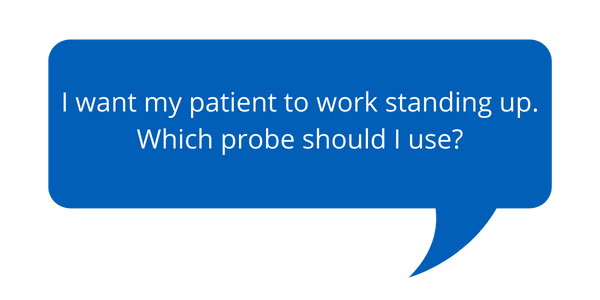
En rééducation vaginale il faut contrôler debout la capacité que vous avez de verrouiller le périnée à l’effort.
Après avoir appris avec votre thérapeute à contrôler vos muscles périnéaux couché, vous devez être capable de contracter ces muscles debout en toussant, en sautant, en vous baissant, en sautillant sur un pied, etc…
La sonde la plus recommandée pour ces exercices est la PERISIZE 4, unique en son genre puisqu’elle va permettre au thérapeute de voir comment les parties droite et gauche de votre musculature vaginale réagissent.
L’autre sonde utilisable par défaut est l’OPTIMA 3. Mais il faudra faire un quart de tour avec la sonde pour faire les contrôles, ce qui n’est pas le cas avec la Perisize.
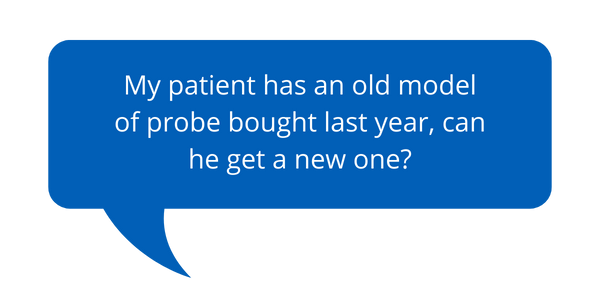
Yes, in France, patients have the option of being reimbursed for one probe per year.



